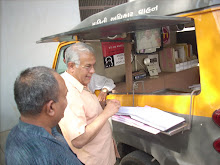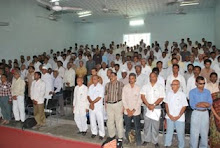Times of India: Trivandrum: Wednesday, 31 Jan 2024.
Going by the yearly data obtained through RTI, desilting of waterbodies in the city has been a costly affair. Information from the minor irrigation department shows that an amount of Rs 1.82 crore was spent on desilting Karimadom pond, Kariyil canal (2017-18 to 2022-23) and Thettiyar (2020-21 to 2023-24). Yearly expense on desilting Kariyil thodu has ranged between Rs 1.2 lakh to Rs 53 lakh.
The reply shows that the work on desilting Karimadom pond had to be held up due to non-availability of land for the disposal of desilted earth that exude foul smell.
About 7,876 cubic metre silt has been removed from Thettiyar between 2021-22 and 2023-24 while 13,728.4 cubic metre silt was removed from Kariyil canal between 2017-18 and 2022-23.
In spite of the yearly works, Thettiyar canal had breached the banks and caused flooding in areas around Kazhakkoottam in 2023.
TOI has recently reported that over Rs 4.3 crore have been spent in cleaning five waterbodies in the city in the past five years, according to the RTI information obtained from the department of irrigation.
The amount has been spent for cleaning Pazhavangadi thodu, Ulloor thodu, Thekkanakkara canal, Killi river and Karamana river.
The highest amount was spent on Killi river and Pazhavangadi thodu. Over 1 crore was spent on Pazhavangadi thodu and Rs 1.84 crore was spent on cleaning Killi river in the city.
Following the flooding in the city in 2021, the irrigation department had prepared an initial study report on flood mitigation. The team identified around 500 vulnerable points in the waterbodies which required immediate attention.
A data bank was created on these vulnerable points and is being reviewed. Additional chief secretary (water resources) had directed that each water body has to be assigned an officer to identify the bottleneck points, including waste dumping spots, delta formation areas, zones with shrubs and trees which block the smooth flow of water.
The report noted that the most severe and frequent flooding in the city occurs at Thampanoor, East Fort area, Uppidamoodu and Kannammoola. The flooding in this area occurs three to six times during monsoon. The average water depth is 0.6m to 1.2m and persists for two to 24 hours in the central part and three to four days in the southern part of the city. The drainage network of the city consists of two major rivers namely Karamana and Killi, a few canals, their feeders and lakes, the project report notes.
As per the report, timely and frequent cleaning of waterbodies to avoid delta formation inside them, identifying waste dumping areas for regular cleaning, steps to be taken by municipal corporation to prevent further dumping of garbage into the waterbodies, preventing growth of vegetation inside the water body, , fencing, installation of notice boards and CCTVs along the vulnerable points in the water body were proposed as steps to be taken on a war footing.
Going by the yearly data obtained through RTI, desilting of waterbodies in the city has been a costly affair. Information from the minor irrigation department shows that an amount of Rs 1.82 crore was spent on desilting Karimadom pond, Kariyil canal (2017-18 to 2022-23) and Thettiyar (2020-21 to 2023-24). Yearly expense on desilting Kariyil thodu has ranged between Rs 1.2 lakh to Rs 53 lakh.
The reply shows that the work on desilting Karimadom pond had to be held up due to non-availability of land for the disposal of desilted earth that exude foul smell.
About 7,876 cubic metre silt has been removed from Thettiyar between 2021-22 and 2023-24 while 13,728.4 cubic metre silt was removed from Kariyil canal between 2017-18 and 2022-23.
In spite of the yearly works, Thettiyar canal had breached the banks and caused flooding in areas around Kazhakkoottam in 2023.
TOI has recently reported that over Rs 4.3 crore have been spent in cleaning five waterbodies in the city in the past five years, according to the RTI information obtained from the department of irrigation.
The amount has been spent for cleaning Pazhavangadi thodu, Ulloor thodu, Thekkanakkara canal, Killi river and Karamana river.
The highest amount was spent on Killi river and Pazhavangadi thodu. Over 1 crore was spent on Pazhavangadi thodu and Rs 1.84 crore was spent on cleaning Killi river in the city.
Following the flooding in the city in 2021, the irrigation department had prepared an initial study report on flood mitigation. The team identified around 500 vulnerable points in the waterbodies which required immediate attention.
A data bank was created on these vulnerable points and is being reviewed. Additional chief secretary (water resources) had directed that each water body has to be assigned an officer to identify the bottleneck points, including waste dumping spots, delta formation areas, zones with shrubs and trees which block the smooth flow of water.
The report noted that the most severe and frequent flooding in the city occurs at Thampanoor, East Fort area, Uppidamoodu and Kannammoola. The flooding in this area occurs three to six times during monsoon. The average water depth is 0.6m to 1.2m and persists for two to 24 hours in the central part and three to four days in the southern part of the city. The drainage network of the city consists of two major rivers namely Karamana and Killi, a few canals, their feeders and lakes, the project report notes.
As per the report, timely and frequent cleaning of waterbodies to avoid delta formation inside them, identifying waste dumping areas for regular cleaning, steps to be taken by municipal corporation to prevent further dumping of garbage into the waterbodies, preventing growth of vegetation inside the water body, , fencing, installation of notice boards and CCTVs along the vulnerable points in the water body were proposed as steps to be taken on a war footing.














































































